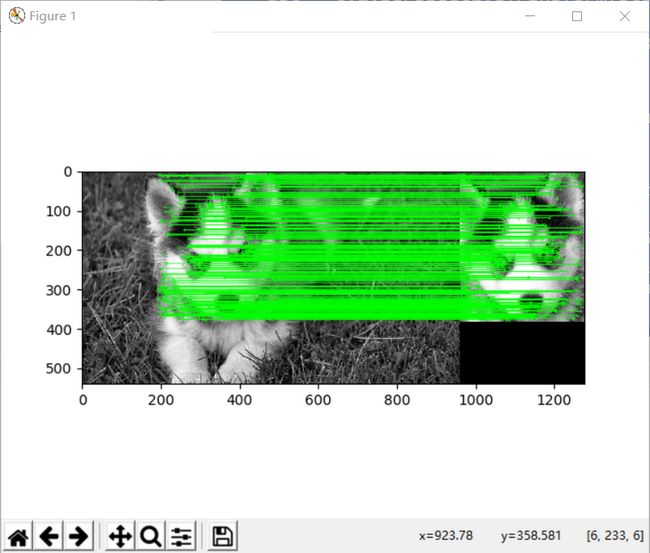Feature Matching + Homography to find Objects
联合使用特征提取和 calib3d 模块中的 findHomography 在复杂图像中查找已知对象.
之前在一张杂乱的图像中找到了一个对象(的某些部分)的位置.这些信息足以帮助我们在目标图像中准确的找到(查询图像)对象.为了达到这个目的可以使用 calib3d 模块中的cv2.findHomography()函数.如果将这两幅图像中的特征点集传给这个函数,他就会找到这个对象的透视图变换.然后就可以使用函数 cv2.perspectiveTransform() 找到这个对象了.至少要 4 个正确的点才能找到这种变换.在匹配过程可能会有一些错误,而这些错误会影响最终结果。为了解决这个问题,算法使用 RANSAC 和 LEAST_MEDIAN(可以通过参数来设定).所以好的匹配提供的正确的估计被称为 inliers,剩下的被称为outliers.cv2.findHomography() 返回一个掩模,这个掩模确定了 inlier 和outlier 点.
import numpy as np
import cv2
import matplotlib.pyplot as plt
MIN_MATCH_COUNT = 10
img1 = cv2.imread('img.jpg',0) # queryImage
img2 = cv2.imread('img1.jpg',0) # trainImage
# Initiate SIFT detector
sift = cv2.xfeatures2d.SIFT_create()
# find the keypoints and descriptors with SIFT
kp1, des1 = sift.detectAndCompute(img1,None)
kp2, des2 = sift.detectAndCompute(img2,None)
FLANN_INDEX_KDTREE = 0
index_params = dict(algorithm = FLANN_INDEX_KDTREE, trees = 5)
search_params = dict(checks = 50)
flann = cv2.FlannBasedMatcher(index_params, search_params)
matches = flann.knnMatch(des1,des2,k=2)
# store all the good matches as per Lowe's ratio test.
good = []
for m,n in matches:
if m.distance < 0.7*n.distance:
good.append(m)
if len(good)>MIN_MATCH_COUNT:
src_pts = np.float32([ kp1[m.queryIdx].pt for m in good ]).reshape(-1,1,2)
dst_pts = np.float32([ kp2[m.trainIdx].pt for m in good ]).reshape(-1,1,2)
M, mask = cv2.findHomography(src_pts, dst_pts, cv2.RANSAC,5.0)
matchesMask = mask.ravel().tolist()
h,w = img1.shape
pts = np.float32([ [0,0],[0,h-1],[w-1,h-1],[w-1,0] ]).reshape(-1,1,2)
dst = cv2.perspectiveTransform(pts,M)
img2 = cv2.polylines(img2,[np.int32(dst)],True,255,3, cv2.LINE_AA)
else:
print("Not enough matches are found - %d/%d" % (len(good),MIN_MATCH_COUNT))
matchesMask = None
# Finally we draw our inliers (if successfully found the object) or matching keypoints (if failed).
draw_params = dict(matchColor = (0,255,0), # draw matches in green color
singlePointColor = None,
matchesMask = matchesMask, # draw only inliers
flags = 2)
img3 = cv2.drawMatches(img1,kp1,img2,kp2,good,None,**draw_params)
plt.imshow(img3, 'gray'),plt.show()
